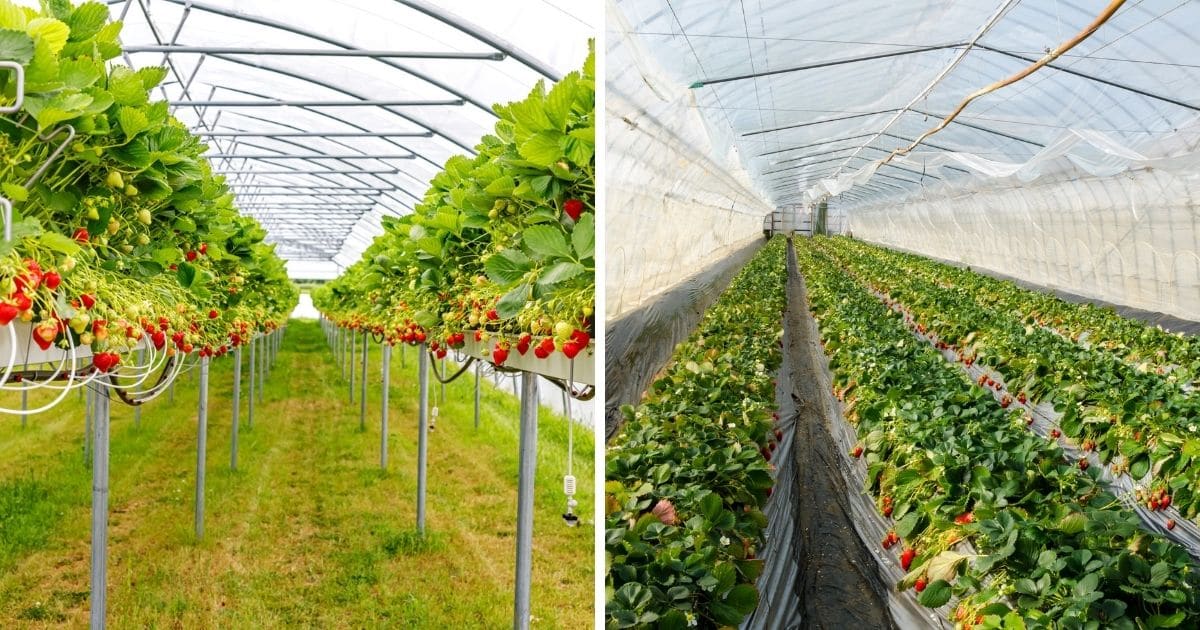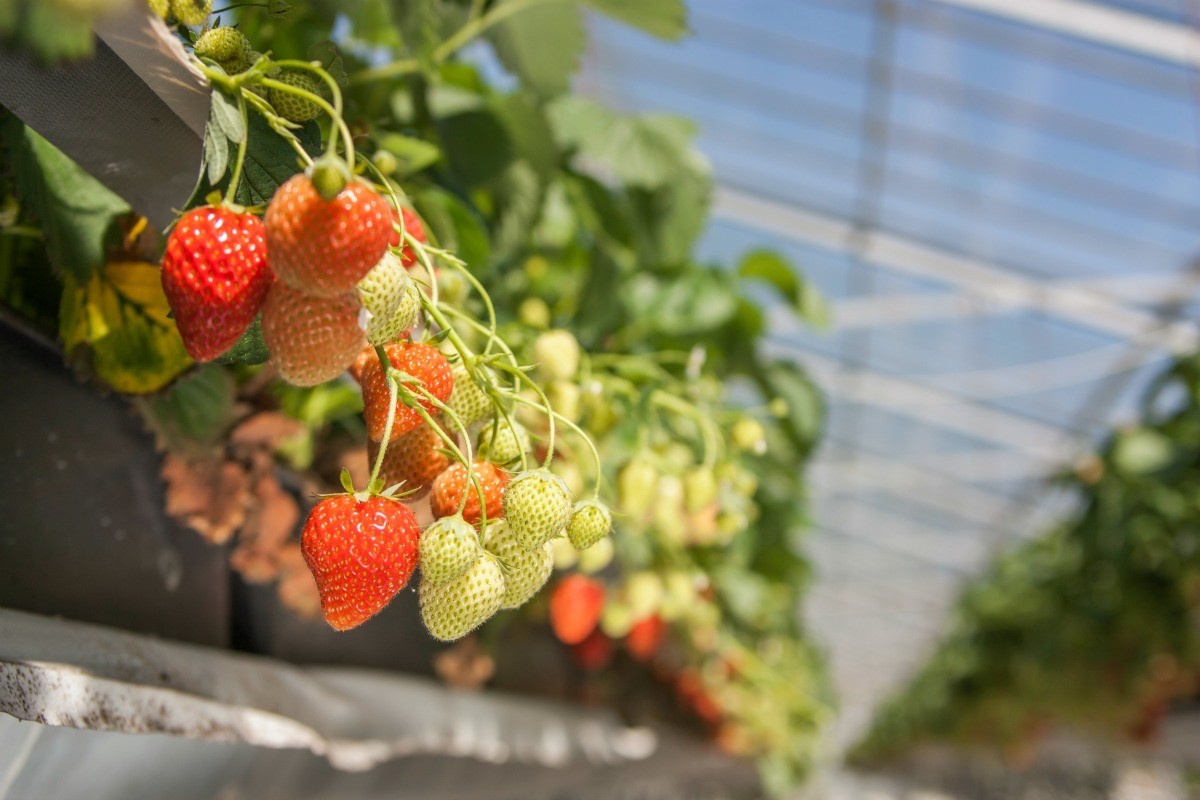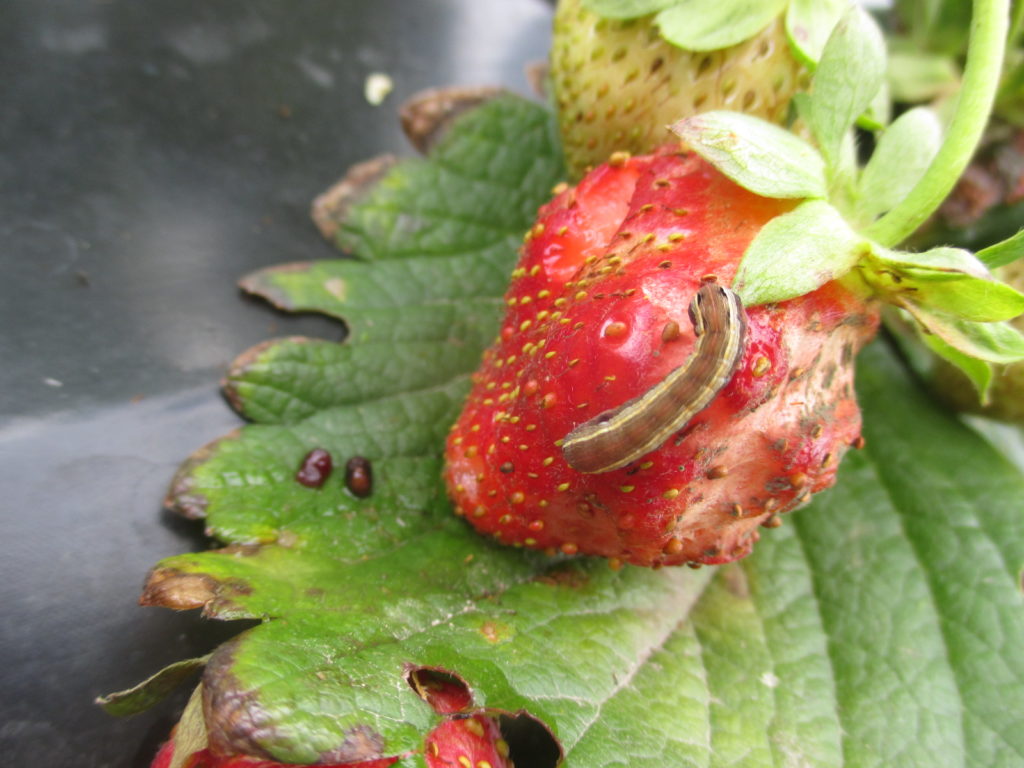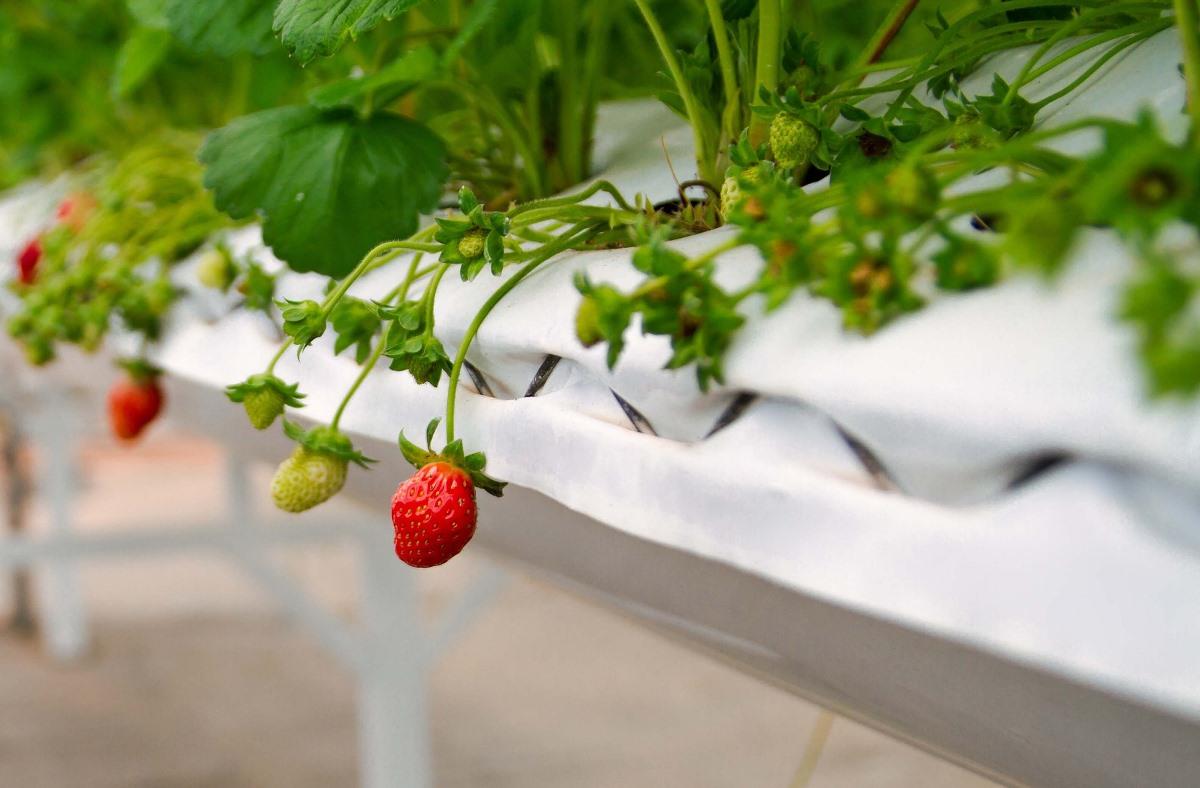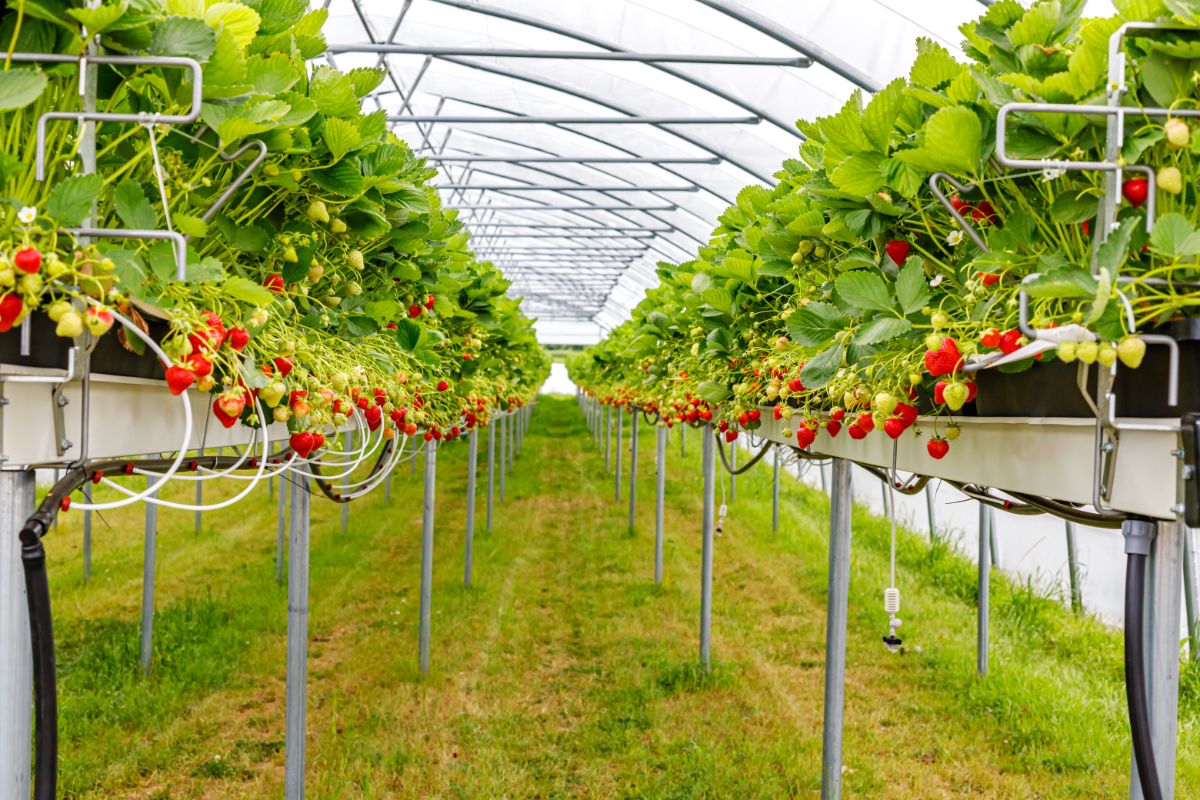Unlocking the Potential of Greenhouse Strawberry Production
Growing strawberries in a greenhouse is a highly rewarding and productive way to cultivate these delicious fruits. By providing a controlled climate, greenhouses can extend the growing season, increase yields, and improve fruit quality. This method of cultivation can be a game-changer for strawberry enthusiasts and commercial growers alike, as it allows for year-round production and reduced reliance on external weather conditions. In fact, many growers have successfully grown strawberries in greenhouses, taking advantage of the controlled environment to produce high-quality crops. The question “can you grow strawberries in a greenhouse?” is often met with a resounding “yes,” as this method has proven to be a viable and profitable option for many. With the right conditions and care, greenhouse-grown strawberries can thrive, providing a bountiful harvest for growers to enjoy.
How to Create an Ideal Greenhouse Environment for Strawberries
Creating an ideal greenhouse environment for strawberries requires careful consideration of several key factors. Temperature, humidity, light, and soil quality are all crucial elements that must be optimized to promote healthy growth and maximize yields. When it comes to temperature, strawberries prefer daytime temperatures between 60-70°F (15-21°C) and nighttime temperatures around 50-60°F (10-15°C). Maintaining a consistent temperature range is essential, as fluctuations can stress the plants and reduce fruit production. Humidity is also an important factor, with strawberries preferring a relatively high humidity level of 50-70%. This can be achieved through the use of misting systems or humidifiers. In terms of light, strawberries require a minimum of 6 hours of direct sunlight per day, although supplemental lighting can be used to extend the growing season. Soil quality is also critical, with strawberries preferring well-draining, fertile soils with a pH between 5.5 and 6.5. By optimizing these conditions, growers can create an ideal greenhouse environment for strawberries, allowing them to thrive and produce high-quality fruit.
Choosing the Right Strawberry Variety for Greenhouse Growing
When it comes to growing strawberries in a greenhouse, selecting the right variety is crucial for optimal growth and production. There are several types of strawberry varieties suitable for greenhouse growing, each with its unique characteristics and advantages. Day-neutral strawberries, such as ‘Albion’ and ‘Camarosa’, are popular choices for greenhouse growing due to their ability to produce flowers and fruit regardless of the day length. These varieties are ideal for greenhouses with supplemental lighting, as they can produce fruit year-round. Ever-bearing strawberries, such as ‘Everbearing Supreme’ and ‘Tribute’, produce multiple crops throughout the growing season and are well-suited for greenhouses with a consistent temperature and humidity level. June-bearing strawberries, such as ‘Earliglow’ and ‘Allstar’, produce one large crop in the spring and are ideal for greenhouses with a cooler temperature and higher humidity level. When selecting a strawberry variety for greenhouse growing, consider factors such as fruit size, flavor, and disease resistance. By choosing the right variety, growers can optimize their greenhouse strawberry production and enjoy a bountiful harvest of delicious and nutritious fruit.
Greenhouse Strawberry Planting and Soil Considerations
When it comes to planting strawberries in a greenhouse, soil preparation is crucial for optimal growth and production. A well-draining potting mix specifically designed for strawberries is essential, as it will help prevent waterlogged soil and root rot. The ideal potting mix should have a pH between 5.5 and 6.5, and contain a balanced fertilizer that provides essential nutrients for strawberry growth. In addition to soil preparation, spacing is also an important consideration when planting strawberries in a greenhouse. Strawberry plants should be spaced 12-18 inches apart to allow for proper air circulation and sunlight penetration. Fertilization is also critical, as strawberries are heavy feeders and require regular applications of fertilizer to promote healthy growth and fruit production. A balanced fertilizer with a ratio of 10-10-10 (nitrogen-phosphorus-potassium) is recommended, and should be applied according to the manufacturer’s instructions. By following these best practices for planting and soil preparation, growers can create an ideal environment for their strawberry plants to thrive in the greenhouse.
Managing Pests and Diseases in Greenhouse Strawberry Crops
Greenhouse strawberry crops can be susceptible to various pests and diseases, which can significantly impact yields and fruit quality. Aphids, whiteflies, and spider mites are common pests that can infest strawberry plants, while powdery mildew, botrytis, and anthracnose are common diseases that can affect strawberry crops. To manage these pests and diseases, integrated pest management (IPM) strategies and organic control methods are recommended. IPM involves using a combination of techniques, such as cultural controls, biological controls, and chemical controls, to manage pests and diseases. Organic control methods, such as introducing beneficial insects, using neem oil, and practicing good sanitation, can also be effective in managing pests and diseases. Regular monitoring of the greenhouse environment and strawberry plants is crucial in detecting pest and disease issues early, allowing for prompt action to be taken to prevent their spread. By implementing IPM strategies and organic control methods, growers can minimize the use of chemical pesticides and fungicides, reducing the environmental impact of their greenhouse strawberry production.
Optimizing Greenhouse Strawberry Production through Pruning and Training
Pruning and training are essential techniques for optimizing greenhouse strawberry production. Pruning involves removing dead, diseased, or damaged leaves and flowers to promote healthy growth and encourage fruiting. Training involves supporting the strawberry plants to maximize space and promote even fruiting. By pruning and training strawberry plants, growers can increase yields, improve fruit quality, and reduce the risk of disease. One effective pruning technique is to remove the flower stalks after the first harvest, allowing the plant to focus its energy on producing new growth and fruit. Another technique is to remove any dead or damaged leaves to prevent the spread of disease. Training strawberry plants can be done using a variety of methods, including the use of trellises, stakes, and clips. By providing support for the plants, growers can promote even fruiting and reduce the risk of fruit rot. Regular pruning and training can also help to promote air circulation and reduce humidity, making it more difficult for diseases to develop. By incorporating pruning and training into their greenhouse strawberry production, growers can optimize their yields and enjoy a bountiful harvest of delicious and nutritious strawberries.
Monitoring and Maintaining Greenhouse Conditions for Strawberry Success
Regular monitoring and maintenance of greenhouse conditions are crucial for optimal strawberry growth and production. By keeping a close eye on temperature, humidity, light, and soil moisture levels, growers can ensure that their strawberry plants are receiving the ideal conditions for growth and fruiting. One effective way to monitor greenhouse conditions is through the use of sensors and automated systems. These systems can provide real-time data on temperature, humidity, and light levels, allowing growers to make adjustments as needed. Manual checks are also important, as they can provide a more detailed understanding of the greenhouse environment. By regularly inspecting the plants and soil, growers can identify any potential issues before they become major problems. Maintaining ideal greenhouse conditions can be a challenge, but with the right tools and techniques, growers can optimize their strawberry production and enjoy a bountiful harvest. For example, using shading materials or whitewashing the greenhouse can help to reduce temperature fluctuations and prevent overheating. By taking a proactive approach to monitoring and maintaining greenhouse conditions, growers can ensure that their strawberry plants are receiving the best possible care and are well on their way to producing a successful crop.
Harvesting and Enjoying Your Greenhouse-Grown Strawberries
Harvesting greenhouse-grown strawberries is a rewarding experience, and with the right techniques, you can enjoy a bountiful crop of delicious and nutritious fruit. The timing of the harvest is crucial, as strawberries are typically ready to pick when they are bright red and slightly soft to the touch. It’s essential to handle the fruit gently to avoid bruising, and to store it in a cool, dry place to maintain its freshness. One of the best ways to enjoy greenhouse-grown strawberries is to eat them fresh, either on their own or as part of a salad or dessert. However, there are also many ways to preserve strawberries, such as freezing, jam-making, or dehydrating. By experimenting with different recipes and preservation methods, you can make the most of your homegrown strawberries and enjoy them throughout the year. For example, you can make a delicious strawberry jam by cooking down the fruit with some sugar and pectin, or you can dry the strawberries to make a healthy and tasty snack. With a little creativity, the possibilities are endless, and you can enjoy your greenhouse-grown strawberries in a variety of ways.



